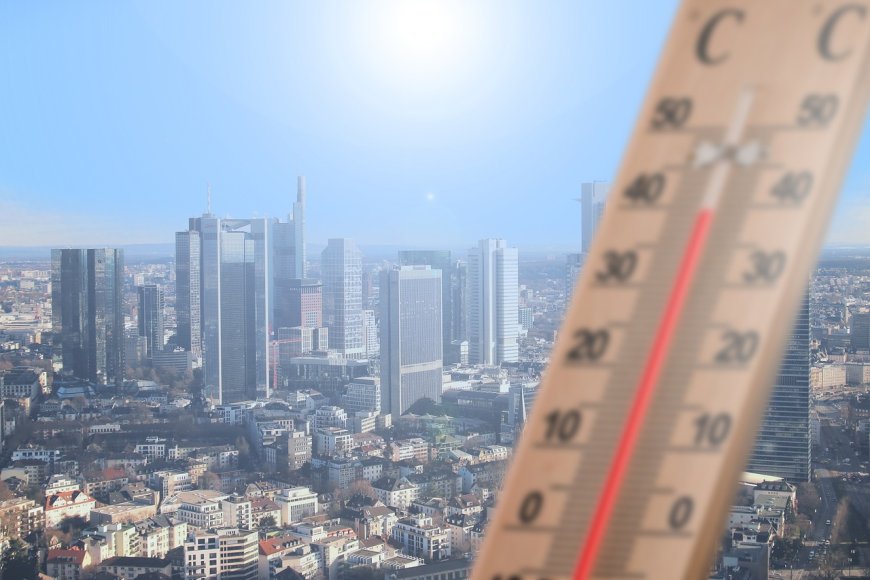Urban Heat Islands: The Silent Emergency Boiling Indian Cities Alive
India’s cities are turning into heat traps due to unplanned urbanization and vanishing green cover. Explore the science behind urban heat islands, their devastating impact, and the urgent need for climate-smart city planning.

Indian cities are heating up at an alarming rate, and it’s not just because of climate change. The root of the problem lies closer to the ground—literally. Urban Heat Islands (UHIs) are turning once-temperate cities into scorching heat zones, often several degrees warmer than surrounding rural areas. As climate risks escalate and heatwaves become deadlier, understanding UHIs is no longer academic—it’s essential for urban survival.
What Is an Urban Heat Island?
An Urban Heat Island is a phenomenon where cities experience significantly higher temperatures than nearby rural regions. This occurs because concrete, asphalt, glass, and steel absorb and retain heat far more than natural surfaces like soil, water, and vegetation.
According to a NASA Earth Observatory report, UHIs can raise temperatures by 3°C to 12°C in metropolitan zones compared to rural surroundings. For heat-stricken countries like India, this amplifies health risks, energy consumption, and ecological imbalance.
Why Indian Cities Are Particularly Vulnerable
India’s urban population has grown from 290 million in 2001 to over 500 million today. With this rapid urbanization, many cities have expanded in a chaotic, unregulated manner. Here's why Indian metros are particularly vulnerable to the urban heat island effect:
1. Unplanned Construction and Paved Surfaces
In cities like Delhi, Mumbai, Ahmedabad, and Hyderabad, vast areas have been paved over, replacing vegetated land. Buildings are constructed using heat-absorbing materials and without any thought to passive cooling or ventilation.
2. Loss of Green Cover
Between 2001 and 2020, Bengaluru lost 88% of its green cover, according to research by Indian Institute of Science. Parks, wetlands, and urban forests that could mitigate heat are now parking lots or high-rise buildings.
3. Increased Vehicular and Industrial Emissions
Air conditioning units, traffic congestion, and industrial operations add anthropogenic heat, which compounds the problem, especially during peak summer months.
4. Inadequate Urban Design
Indian cities often lack proper urban planning codes that enforce green infrastructure or ventilation corridors. Building-by-building construction with no master plan worsens thermal retention.
The Public Health and Economic Fallout
The 2024 heatwave in India killed more than 150 people across major cities, a grim reminder of the consequences of inaction. A study by Lancet Planetary Health found that over 17,000 heat-related deaths occurred in India between 2011 and 2020, many of which were preventable with better infrastructure.
Beyond health, the economic cost is huge:
-
Loss in productivity: Outdoor labor, which constitutes a significant part of India’s economy, suffers during heatwaves.
-
Higher energy demand: Air conditioners and coolers spike electricity usage, leading to power shortages and grid failures.
-
Water stress: Elevated temperatures accelerate evaporation, intensifying the water crisis in cities like Chennai and Jaipur.
Climate-Smart Solutions: Reclaiming the Urban Landscape
India urgently needs a climate-resilient urban strategy to reverse the UHI trend. Fortunately, a growing number of initiatives show that mitigation is possible:
1. Urban Forests and Green Roofs
Projects like Delhi’s Ridge Forest conservation and Mumbai’s Miyawaki forests have created microclimates that help lower ambient temperatures. Studies show that increasing tree canopy by just 10% can reduce local temperature by up to 2°C.
Organizations like ICLEI South Asia work with municipalities to incorporate green spaces in city planning.
2. Cool Roofing Technologies
Ahmedabad, which launched the Heat Action Plan in collaboration with the Natural Resources Defense Council (NRDC), has shown how reflective and white-painted roofs reduce indoor temperatures and heat stress in slum areas.
3. Sponge Cities and Water Sensitive Design
Integrating lakes, ponds, and rain gardens into urban layouts helps regulate local temperature while preventing floods. The city of Surat is piloting water-sensitive urban design to mitigate extreme heat and rainfall simultaneously.
4. Policy Interventions and Urban Masterplans
Cities must revise building codes to mandate eco-sensitive architecture. The Ministry of Housing and Urban Affairs encourages states to adopt the National Mission on Sustainable Habitat, but on-ground implementation is lacking and needs robust monitoring.
Role of Citizens and Community
While governments must lead the change, individual actions also matter:
-
Start rooftop gardens or install solar reflective panels
-
Support local tree plantation drives
-
Avoid unnecessary air conditioning usage
-
Vote for local leaders prioritizing green development
Even simple steps like keeping balconies shaded or using clay tiles for roofing can help reduce household heat loads.
The Way Forward
India is facing a climate emergency hidden in plain sight. Urban Heat Islands are not just about warmer cities—they represent a dangerous intersection of poor planning, socio-economic disparity, and ecological neglect.
Cities like Ahmedabad, Indore, and Hyderabad are showing early signs of adaptation. But we need a national framework, backed by science and policy, to retrofit our cities for a hotter future.
Without urgent, climate-smart urban planning, India’s growth story may quite literally burn itself out.



















































